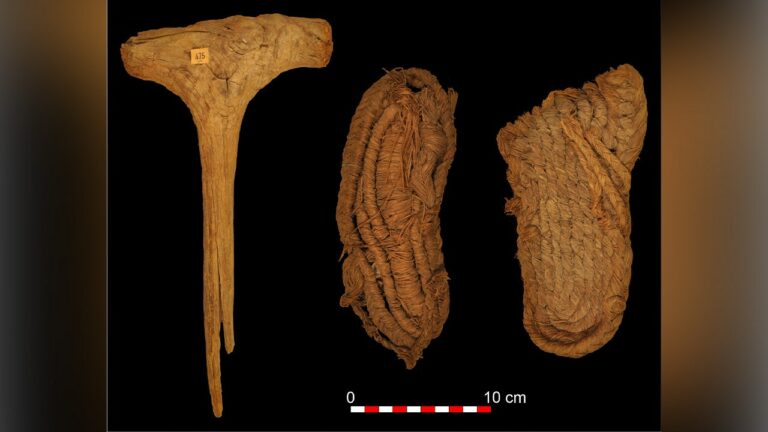Ancient Sandals Unearthed in Spanish Bat Cave
In an exciting archaeological find, scientists have uncovered what they believe to be the oldest pair of sandals in Europe, dating back more than 6,000 years. These remarkable artifacts were among many other discoveries found in a bat cave system in southern Spain.
Researchers from the Universidad de Alcalá and the Universitat Autònoma de Barcelona made this groundbreaking discovery, which provides the first direct evidence of basketry used by hunter-gatherer societies and early farmers in Southern Europe. The ancient objects were found in the Cueva de los Murciélagos de Albuñol in Granada, Spain.
The cache of items found in the cave included baskets, sandals, and organic tools, all associated with early Neolithic farming communities. Through the study of raw materials and advanced technology, scientists believe these items originated during the early and middle Holocene period, roughly between 9,500 and 6,200 years ago.
Challenging Assumptions About Ancient Communities
Francisco Martínez Sevilla, a researcher in the Prehistory Department of the University of Alcalá, highlighted the significance of these discoveries. He stated that these ancient objects “make us question the simplistic assumptions” about prehistoric communities.
Sevilla emphasized, “The quality and technological complexity of the basketry makes us question the simplistic assumptions we have about human communities prior to the arrival of agriculture in Southern Europe.”
Earliest and Most Diverse Prehistoric Footwear
Among the remarkable findings, the pair of sandals stands out as the “earliest and widest-ranging assemblage of prehistoric footwear” found not only in the Iberian Peninsula but also in Europe. The remarkable preservation of these sandals is attributed to the low humidity levels within the caves.
The extraordinary preservation conditions, linked to the cave’s geological characteristics, ensure the protection of organic materials in this unique environment.
This remarkable discovery, published in the Science Advance journal, traces its roots back to the 19th century when mining activities first uncovered these objects, meticulously documented by Manuel de Góngora y Martínez.
This archaeological revelation challenges our understanding of ancient societies and offers a remarkable glimpse into their innovative technologies.

